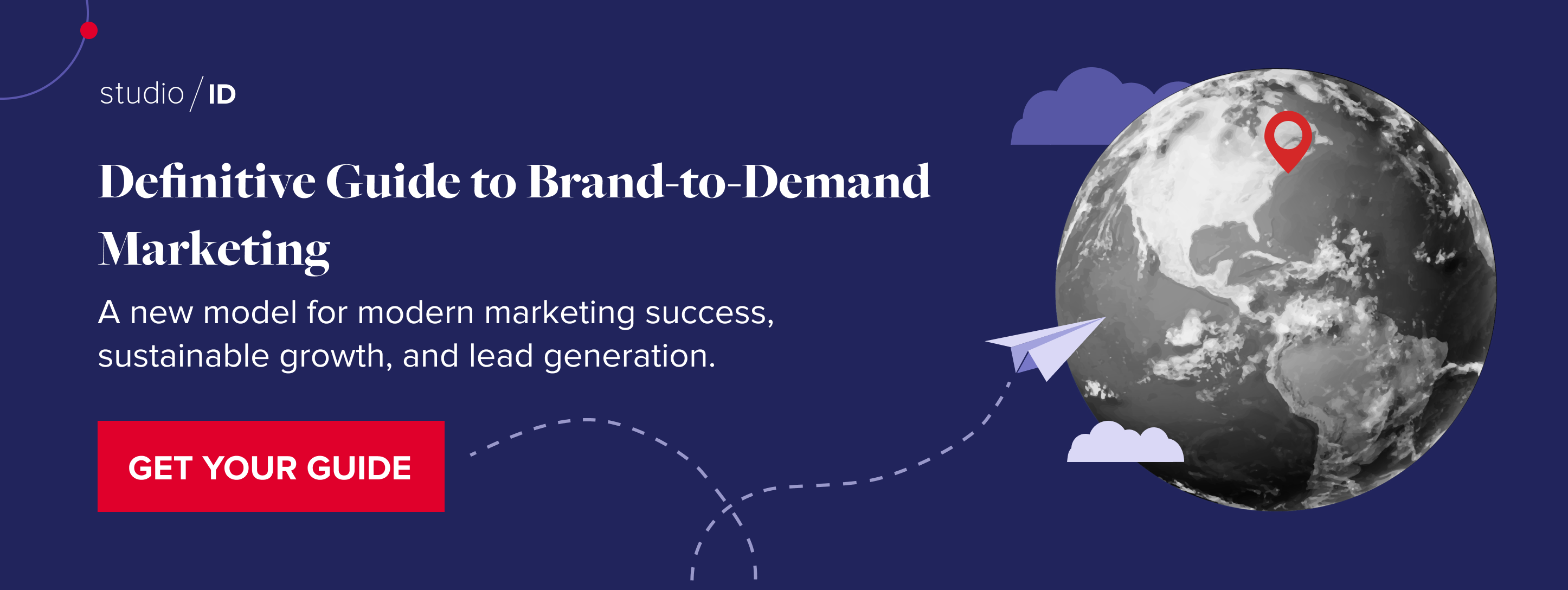As marketers, we can always count on one constant: change. Preferences, behaviors, processes, and habits never stay static for long. This continual state of flux is what keeps the marketing industry so dynamic and interesting — but it can also leave us at a loss for where we need to focus our attention, and how we can actually meet the shifts we’re seeing.
To give marketers a leg up, we’ve assembled the three most influential trends that are shaping the content marketing industry right now, and will continue to do so in the months and years to come.
Decision By Committee
Marketers are faced with a B2B buying process that is increasingly protracted, crowded, and political.
The DemandGen 2021 Buyer Behavior study notes a continuation in the year-over-year growth in the number of team members involved in the buying process.
The study reveals that, “In fact, over the past 12 months, 19% of companies formed buying committees for the first time, alongside the 49% of respondents who already utilized them in the past.”
More people adopting committees and entering the buying process means a longer and more protracted process as individuals within the group take the time to research vendors, build use cases, and drive agendas.
Today, marketers are called on to master the craft of mapping communications to the (multiple) audience mindsets and stages of consideration in play, as well as facilitate alignment across business units and stakeholders.
The Takeaway
Modern marketers must reframe the traditional marketing funnel to a customer knowledge journey to meet every member of the buying committees’ need for a trusted source that can help them develop an authoritative point-of-view on topics that matter — establishing them as experts in their field, and informing their high-stakes decisions.
Chronic Content Fatigue
The commoditization of the content industry has resulted in mediocre content, declining engagement, and shortening attention spans. And this trend shows no signs of stopping.
Digital media budgets are expected to rise across the board in 2022, with prominent upticks in investments funneled toward influencer marketing, social media marketing, and internet advertising. As players everywhere double down on spending in digital, marketers should expect to be up against even more competition.
According to the IAB, “In 2020, US internet advertising improved by 12.2%, reaching $139.8 billion in revenues. Looking ahead, continued growth is forecasted in the US digital advertising market, with over $200 billion in revenue estimated by 2025.”
But as we’re painfully aware, more content doesn’t necessarily equate to better marketing. As reported by Marketing Dive, marketers are losing confidence. More than four out of ten (43%) marketers rate their content as inconsistent, while only 7% say they consider it “exceptional.”
Audiences are noticing, and are becoming increasingly weary, and wary, as they wade through a deluge of lackluster content.
In an over-served landscape, marketers need to find ways to make every interaction matter. Today’s audiences are more sophisticated and adept at filtering out information that no longer serves them; swiping, sifting, and scanning their way through the daily avalanche of content.
Jam-packed social media feeds, inboxes stuffed to the gills, and targeted ads everywhere we turn means that one false move could result in an audience member dismissing your brand for good.
The Takeaway
Today’s audiences simply have no tolerance for thin, disjointed content. In order to capture their attention and truly drive brand salience, marketers need to architect convincing, cohesive brand stories — or expect their content to simply get lost in the shuffle.
Customer Experience or Bust
Increasing competition in all categories means that delivering a superior customer experience is table stakes.
The most recent edition of Salesforce’s State of the Connected Customer report reveals 62% of consumers say their experiences with one industry influence their expectations of others.
This finding confirms what we’ve suspected all along: marketers aren’t just up against everyone within a particular industry, we’re competing with the best of the best across all industries. Whether you’re selling smartphones or cloud solutions, the benchmark is no longer to be best in the category, but to be best in class.
The IDC reports that $641B will be spent on CX technologies in 2022, over $130B more than in 2019.
The Takeaway
These figures not only signal the rising importance of customer experience, but they also serve as a warning bell to brands everywhere: make necessary investments in CX now, or bet on losing customers to your competitors who did.
Where Do We Go From Here?
In a landscape that’s forcing marketers to match an expanding and more political buying process, vie for increasingly elusive engagement from fatigued audiences, and deliver an exceptional customer experience, siloed marketing strategies and disconnected efforts simply won’t cut it.
The modern marketer must turn to a holistic, concerted brand-to-demand marketing strategy in order to:
- Create exceptional content that fuses brand building with demand generation
- Design memorable customer experiences and rich knowledge journeys for every member of the committee
- Deliver an overall superb customer experience that drives steady growth, over time
To unite your efforts under a cohesive strategy for the year ahead, get your (free) copy of studioID’s Definitive Guide to Brand-to-Demand Marketing.
![]()



